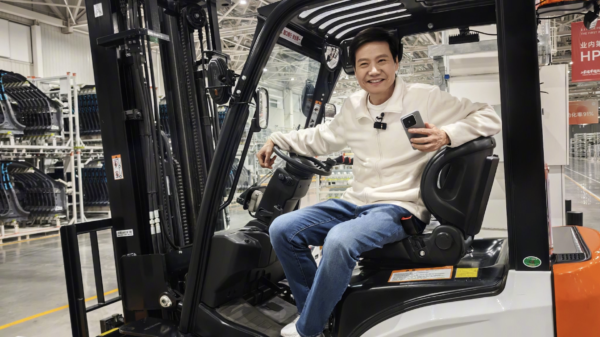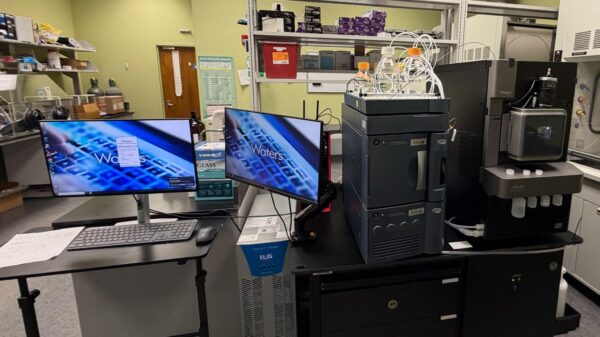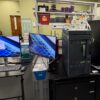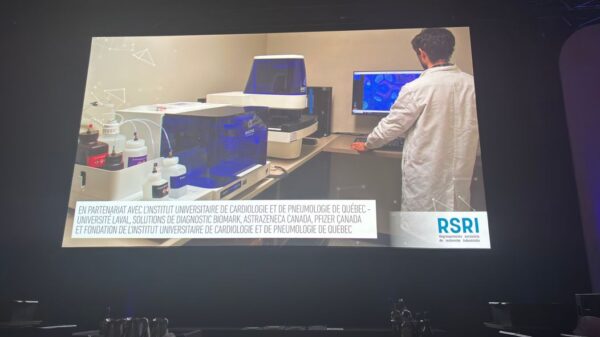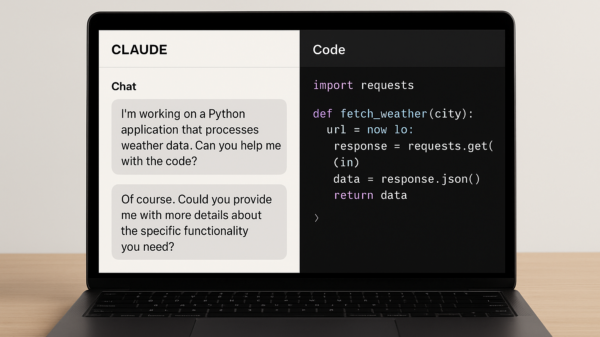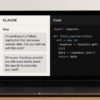BioMark Diagnostics Inc. (CNSX: BUX) (FSE: 20B) (OTCMKTS: BMKDF) may have found a new way to improve the chances of finding lung cancer early.
Earlier this month, the company published a study investigating the use of artificial intelligence (AI) in cancer diagnosis using graph neural networks (GNN). These model the web of metabolic pathways commonly found in cancer.
The paper is called “M-GNN: A Graph Neural Network Framework for Lung Cancer Detection Using Metabolomics and Heterogeneous Graph Modeling.” It was accepted in a Special Issue of International Journal of Molecular Sciences on machine learning in bioinformatics and biomedicine.
BioMark’s scientific team, in collaboration with Harrisburg University of Science and Technology and St. Boniface Hospital Research Centre & Asper Clinical Research Centre, developed the M-GNN framework.
This innovative model uses graph neural networks to interpret complex biological interactions. It analyzes metabolomics data in combination with patient demographics and known metabolic pathways. Additionally, the framework improves understanding of how these factors interact. Accordingly, it offers a more precise approach to studying metabolic disorders.
Jean-François Haince, PhD, BioMark’s CSO, explains that recent advances in graph neural networks (GNNs) have shown strong results in modeling relational data.
These networks effectively capture complex interactions in biological systems, such as links between clinical data, blood metabolites, metabolic function, and disease pathways.
Researchers have already used GNNs on multi omics data to support cancer prognosis and classify cancer subtypes, including lung cancer. However, their use in metabolomics based early detection remains limited.
Further, even with enriched relational data from sources like the Human Metabolome Database (HMDB), this area is still largely unexplored.
Read more: Breath Diagnostics gives the public the chance to join the fight against cancer
Read more: Breath Diagnostics onboards new president and closes critical financing
BioMark building a foundation for next generation of oncology
This research marks a pivotal step forward in metabolomics and highlights BioMark’s commitment to AI driven diagnostics. The M-GNN framework provides a scalable, interpretable tool for precision oncology.
It can refine BioMark’s current assays for lung, breast, and neuroendocrine cancers. Furthermore, it supports the development of new diagnostic and prognostic tools. In addition, this framework strengthens BioMark’s position at the forefront of cancer diagnostics innovation.
“Lung cancer remains a devastating disease where early detection is paramount for improving patient survival,” said Rashid Bux, CEO of BioMark Diagnostics.
“This publication showcases the power of integrating sophisticated AI, like graph neural networks, with our deep expertise in metabolomics.”
The M-GNN framework shows strong potential according to Bux, but researchers must validate it further using larger, more diverse real world datasets. This step is essential for successful clinical translation. The company also continues to explore ways to integrate advanced AI methods into its product development pipeline.
According to Bux, BioMark is building a foundation for a new generation of precision oncology tools through artificial intelligence.
“This technology has the potential to expand beyond initial detection to areas like treatment response monitoring and the discovery of new therapeutic targets, solidifying our position at the forefront of AI driven metabolomics,” said Bux.
Read more: Breath Diagnostics pioneers novel lung cancer breath test
Read more: Breath Diagnostics takes aim at lung cancer with One Breath
OneBreath takes ten minutes to process
The integration of artificial intelligence and machine learning into cancer diagnostics is transforming early detection, particularly for lung cancer.
These technologies analyze vast datasets—such as imaging, genomics, and electronic health records—to identify patterns that may elude human observers. Therefore, AI and ML offer faster, more accurate, and scalable diagnostic solutions.
Breath Diagnostics exemplifies this innovation with its OneBreath technology. This non invasive system captures a patient’s exhaled breath into a specialized bag.
A proprietary microreactor then processes the sample, and ultra high performance liquid chromatography (UHPLC) analyzes volatile organic compounds (VOCs) linked to lung cancer.
The entire process delivers results in about 10 minutes, achieving 94 per cent sensitivity and 85 per cent specificity. Furthermore, OneBreath eliminates the need for radiation based imaging, making it a cost effective and patient friendly alternative.
Another company, Optellum, has developed an AI driven Virtual Nodule Clinic. This tool evaluates CT scans to assign a Lung Cancer Prediction score, aiding clinicians in distinguishing between benign and malignant lung nodules.
By leveraging neural network analytics, Optellum enhances early detection and supports timely intervention.
Qure.ai, an Indian healthcare AI startup, focuses on early detection of conditions like tuberculosis, lung cancer, and stroke.
Its AI based diagnostic tools analyze imaging data to identify abnormalities, serving major global clients and reaching approximately 15 million patients annually. The company is expanding its presence in the U.S., its largest market.
.
joseph@mugglehead.com







